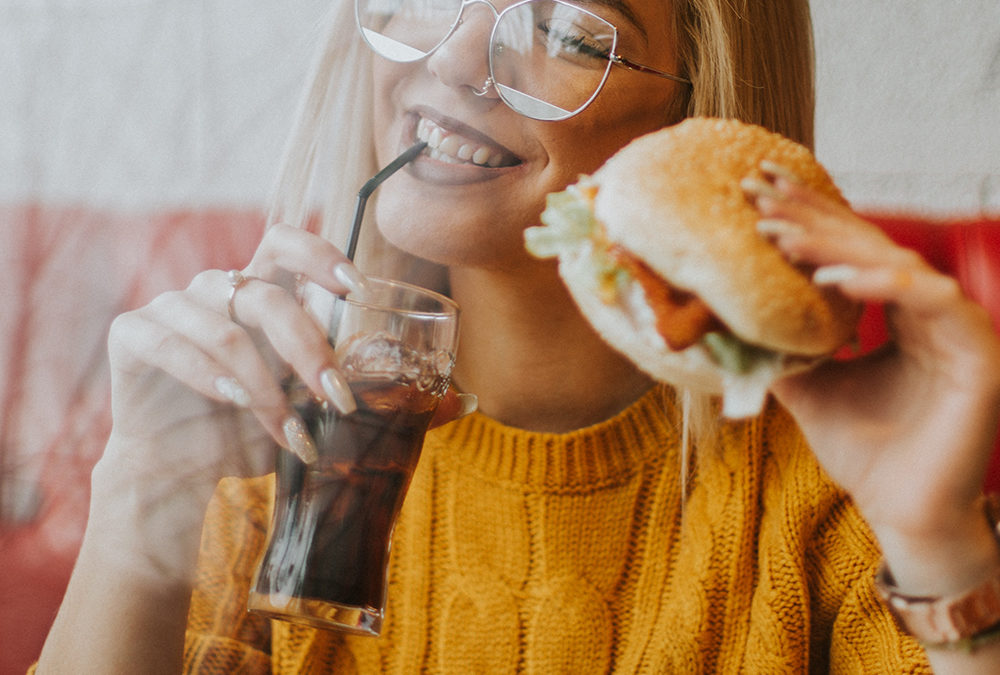
This way of viewing stress and digestion is game changing

This way of viewing stress and digestion is game changing
Hands up if you’ve ever felt stressed or overwhelmed before?
(Pretty sure you should have your hand up right now!)
Stress is a normal part of life, but large amounts of it, or long-term, chronic stress can start having an impact on our health.
And often, stress is the reason why you’re struggling to find the pattern to your digestive symptoms. Stress is a huge trigger when it comes to your digestion. I would maybe even go so far to say that it’s the number one trigger!
It might be why one week a meal can be perfectly fine, and the next week the exact same food ends up in a whole lot of discomfort.
What types of stress can affect your digestion?
When we think about types of stress, we often overlook or downplay the importance of certain areas. Things like deadlines, finances, relationship troubles probably come to mind immediately, but they are just the tip of the iceberg really.
While this is by no means an exhaustive list, below I’ve summarized some of the big categories of stress with examples.
Physical stressors:
- Over-exercising
- Sedentary lifestyle
- Poor sleep (quality and/or quantity)
- Injury or illness, surgery
Chemical stressors:
- Allergens (whether food-related or otherwise)
- Alcohol
- Tobacco
- Drugs
Sensory stressors:
- Bright lights or chaotic colours
- Loud noises
- Crowded or cluttered spaces
- Strong scents
Psychological:
- Deadlines
- Traffic jams
- Financial problems
- Relationship issues
- Worrying about digestive issues

How can stress management help with digestion?
So now that you have an idea about what types of things might be causing stress on your body, let’s look at two angles to consider stress management itself:
- How big is your bucket – aka how resilient are you to stress? How effective are you at dealing with and recovering from it?
- How full is your bucket – aka how much stress are you under? What areas can you identify to decrease the total amount of stress hitting you?
Most of the time, when we talk about stress management, we focus on tactics that build resiliency. How can we make our bucket bigger and therefore manage the ever growing list of stressors we are collecting?
These are actions and habits that you have that reduce the overwhelming feeling of stress or help you increase the size of your bucket so that it takes more stress to even make you hit that feeling in the first place.

What activities can help build stress resilience?
Often these are activities that feel relaxing or recharging in some way. Everyone is going to be different, so just because something works for your friend or family member doesn’t mean that you will find it relaxing or refreshing.
If you’re unsure if something is truly helping you reduce the feelings of stress and overwhelm, note down before and after the activity the number (between 1 and 10) that reflects your feelings of stress at that moment. If your number is higher or the same afterwards, then maybe that activity isn’t for you!
Some examples of activities to build stress resilience:
- Meditating / breathing exercises
- Journaling
- Taking a bath or shower
- Getting a massage
- Going to the spa or spending time pampering yourself
- Exercising
- Being in nature
- Yoga or stretching
- Talking to a friend
- Snuggling a pet
- Reading a book
- Having sex (with a partner or alone!)
- Shopping
- Watching a TV show or movie
- Listening to music
- Laughing
- Doing something creative
- Gardening
- Cooking
- …
Focusing on stress-relieving activities is a great approach, but don’t completely overlook ways to also decrease the total amount of stress you’re subjected to.






